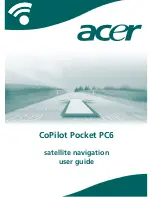
156
EPICenter Concepts and Solutions Guide
Policy Manager Overview
Like Source Port QoS, VLAN QoS rules are implemented only in the devices included in the policy
scope that have the specified VLAN. To enforce QoS settings across switch/VLAN boundaries you must
use 802.1Q tagging—specifically through explicit packet marking using 802.1p or DiffServ. If the switch
ports used for output use 802.1Q tagging, the QoS profile assignment will be carried via the 802.1p
priority bits to the next switch. On
i
-series chipset devices, you can also enable DiffServ examination
and replacement to observe and carry the QoS setting with the packet between switches. The use of
802.1p priority bits is enabled when you enable VLAN tagging, which you can do through the
EPICenter VLAN Manager applet. DiffServ examination must be enabled using the ExtremeWare CLI or
through ExtremeWare Vista. See the
ExtremeWare Software User Guide
for versions 6.0 or later for details
on using 802.1p and DiffServ.
In the example shown in Figure 70, if the links between switches A and C and switches B and C use
tagging (as shown in the diagram), the QoS profile information specified by the VLAN policy will be
propagated into switch C, for traffic originating on the links between the switches. The tag carries
information on which QoS profile should be associated with the traffic flow; the configuration of the
profile itself is determined by the configuration of each individual switch.
If you want to ensure that VLAN QoS is effective end-to-end, you should make sure your
switch-to-switch links use tagged ports.
Policy Named Components
The EPICenter Policy System lets you work with high-level, named components when defining a QoS
policy. These high-level policy named components are mapped to policy primitive components that are
actually used to create QoS rules that can be implemented in a network device.
Policy named components
are components such as groups (which are mapped to their individual
members), users, and named hosts, which can be mapped to IP addresses and ports. These are
represented by the shaded boxes in Figure 71.
Policy primitive components
are components such as device ports, IP addresses, VLANs, and QoS profiles,
that are used to define the QoS rules that will be implemented on a device. These are represented by the
white boxes in Figure 71.
Policy named components, and most primitive policy components must be defined before they can be
used in a policy definition. VLAN, device and port policy primitives must exist in the EPICenter
database (that is be known to the Inventory Manager and VLAN Manager) before they can be used in a
policy definition. Users, hosts, and group resources must be created (or imported) in the Grouping
Manager.
IP addresses, subnets addresses, and layer 4 ports can be predefined, or can be entered directly into a
policy definition through the Policy Manager user interface. In the case of Access-based Security
policies, the destination port is dynamically determined.
Содержание EPICenter 5.0
Страница 12: ...12 EPICenter Concepts and Solutions Guide Preface...
Страница 76: ...76 EPICenter Concepts and Solutions Guide Managing your Network Assets...
Страница 92: ...92 EPICenter Concepts and Solutions Guide Managing VLANs...
Страница 116: ...116 EPICenter Concepts and Solutions Guide Managing Wireless Networks...
Страница 146: ...146 EPICenter Concepts and Solutions Guide VoIP and EPICenter Avaya Integrated Management...
Страница 163: ...Appendices...
Страница 164: ......
Страница 178: ...178 EPICenter Concepts and Solutions Guide Troubleshooting...
















































